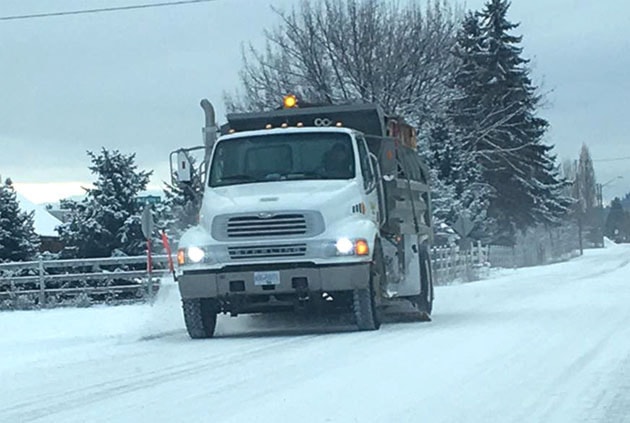Slick roads sent area motorists sliding into one another all over the Okanagan Valley on the weekend.
Mounties responded to approximately 40 collision reports throughout the Central Okanagan and the Coquihalla Connector over the weekend.
“For the most part, the contributing factors in many of these crashes appear to be related to drivers not adjusting their driving behaviour to the change in weather and road conditions,” said Const. Jesse O’Donaghey, adding that the vast majority of those incidents were free of injury-reports.
“Investigators continue to find vehicles with improper or insufficient tires.”
O’Donaghey also said the RCMP would like to remind motorists to allow extra travel time to their destination.
“Ensure that you slow down, adjust your speed to the road conditions and wear your seat belt. Doing so will reduce your chance of sustaining injuries in a crash,” he said.
“For those traveling outside of the Okanagan and over any mountain passes, plan your trip, tell your friends and family, pack an emergency kit, ensure your cell phone is fully charged and check the road and weather conditions before you go. Once again, give yourself ample time to travel to your destination and avoid using cruise control on slippery roads.”
Meanwhile...
When it snows, the District of Lake Country follows established priority service routes to clear area roads as timely as possible. Collector roads, school bus, transit routes and steep roads take priority and the contractor will keep these routes cleared first.
Here is the plan for snow removal:
• All local roads will be serviced once the main roads are cleared and have a reasonable chance of staying cleared. Many local roads are plowed at the same time that the hills are done, whenever it is practical and sensible to do so.
• Generally flat local roads are not frequently serviced until the end of a snow event because the higher-priority roads may need repeat-clearing. Local routes can expect to receive service within 72 hours of the end of a snow event.
• The goal of the snow removal program is to maintain the roads in a passable condition, which does not necessarily mean “bare pavement”.
• On busy routes salt and/or sand may be applied breaking up the snow and causing the roads to clear.
